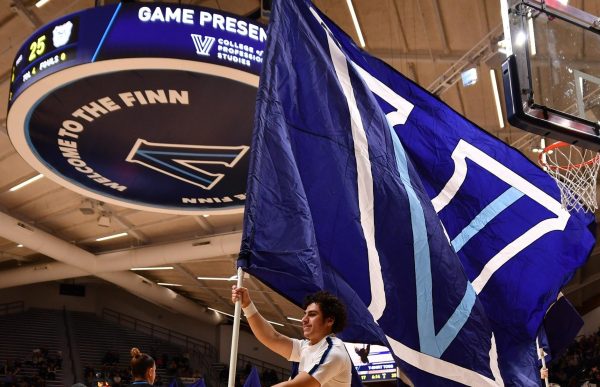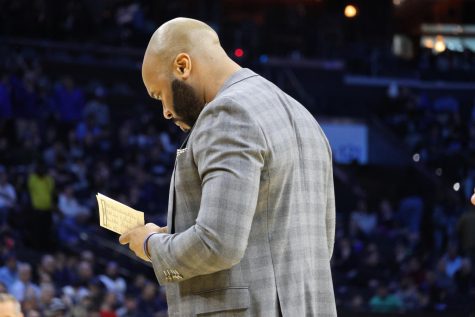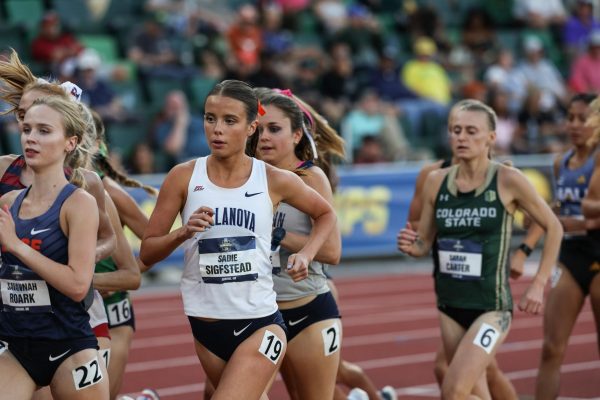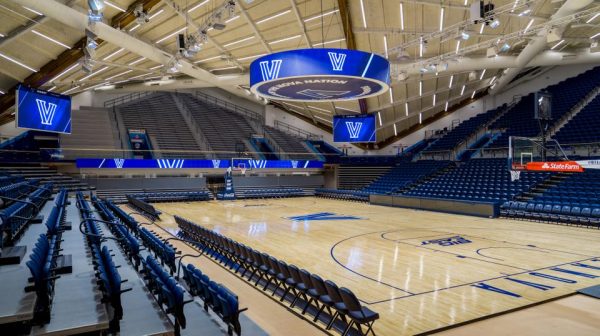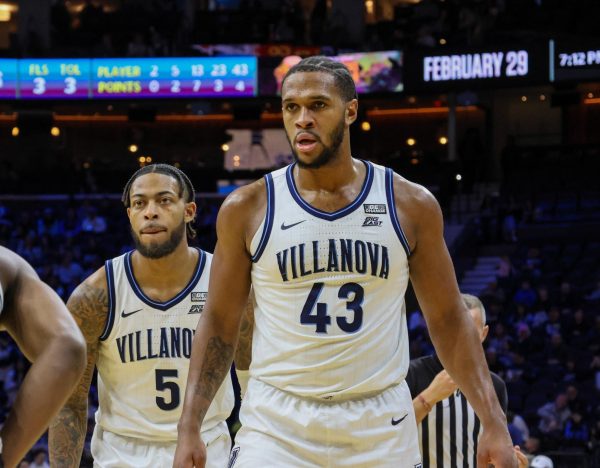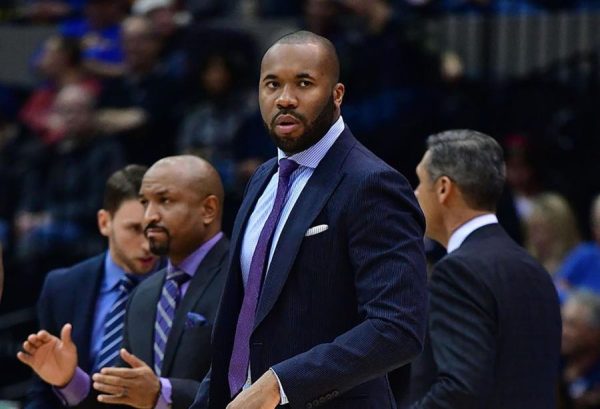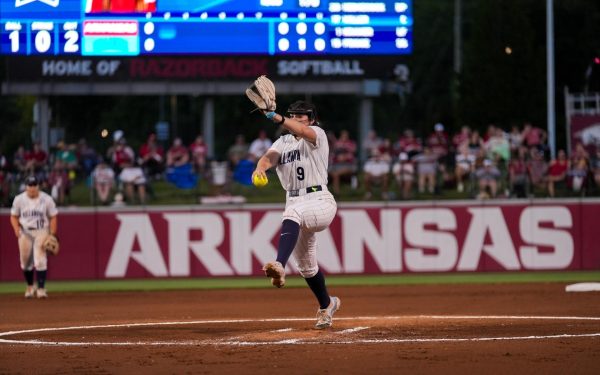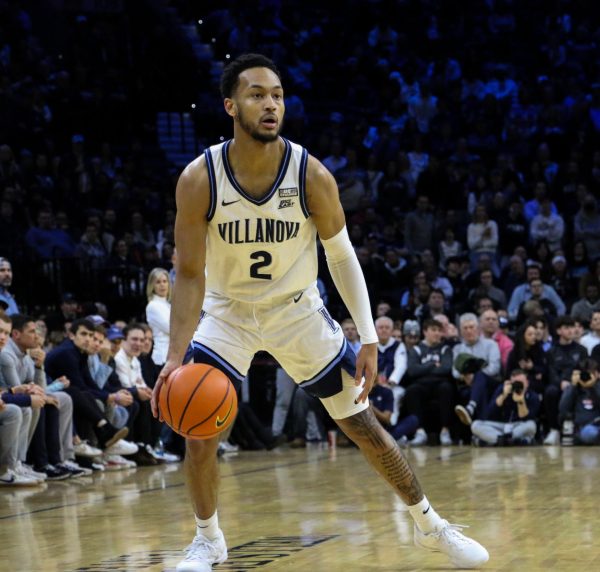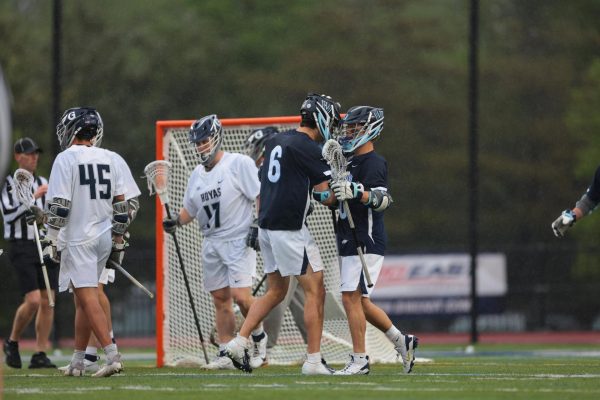Leveling the playing field in high school Field Hockey

October 21, 2015
In a country where equality is constantly a hot topic, it’s no surprise that this debate carries over into athletics, particularly in the sport of high school field hockey.
It’s not uncommon anymore to hear about a girl playing in a football game under the Friday night lights, or to be found on the wrestling mat alongside her male peers. It’s typically supported, actually. Or at least it is found to be uncontroversial and unnecessary to be debated upon.
However, boys playing in sports that are typically considered just for girls are another story.
The male field hockey debate in Pennsylvania primarily erupted in the fall of 2008 when the Wyoming Seminary field hockey team fielded a male student, JaJa Kentwell. Kentwell was the first male on the team in head coach Karen Klassner’s 39-year coaching career. He was born with field hockey in his blood. His parents played for both the Chinese and British national teams and Kentwell has played on the U.S.A. U21 National Team and the U.S.A. Men’s Indoor Team.
Although it wasn’t the first time a male had played field hockey in the state, Wyoming Seminary faced extreme scrutiny due to the success of the team. A few other area squads had boys on their rosters, as well. One in particular had eight. However, their team was not as successful as Wyoming Seminary. When Kentwell was played his first season, I was a freshman on the team. That season, our team was undefeated division champions, district champions and PIAA state champions.
I vividly recall the extreme scrutiny that Kentwell and our team faced due to our success. The “Penn Live Blog” online blew up with excruciating, negative comments against a 17-year-old boy. “They’re only winning because they have a boy,” they’d say, ignoring the fact that two of our female seniors would be heading off to play at the University of North Carolina and Duke University on full scholarships the following year, and that they too were contributing to our success. “It’s unfair,” the anonymous commenters, hiding behind their screens, would charge. Was it jealousy?
Security was heightened at big games. Police patrolled the grounds in and around the field. Fans from opposing teams were ejected due to derogatory comments about Kentwell.
The drama continued when our roster included a male German exchange student. That year, we won the state championship, too. “They can only win a state championship with a boy,” they’d say. There was a target on our backs.
My senior season was our class’ first year without a male teammate. Naturally, the field hockey community felt that we would not be a state championship contender, that we couldn’t make it as far without a boy. We felt that we had something to prove. The media, the state and field hockey analysts didn’t believe that we could do it. But we did. We captured our third PIAA State Championship title. Needless to say, they underestimated us because we were a group of girls, without any boys.
In other countries, field hockey is a very popular sport for both male and females, and in some countries, the sport is male dominated. It is a part of the culture.
However, in the United States, field hockey is primarily played by girls. It is due to a stereotype associated with field hockey being a female sport in the U.S. that has created this notion in the minds of Americans that field hockey is a “girl sport.” But people haven’t really bothered to take a look at the world surrounding them to notice the level at which males are equally as involved in the game as females are.
Despite the opportunity for males to play in field hockey games in Pennsylvania, other states do not allow this. For example, in Virginia, males can only practice but not play in any official contest. There are two boys on the Charlottesville High School field hockey roster in Virginia who show up for practice every day, suit up for games, but sit on the bench because they are boys.
“The misconception people have is that boys want to play on girls hockey teams,” Kentwell says. “No boy is interested in playing against girls. They chose the sport, not the team. Unfortunately, they have no other choice because there are no other avenues due to boys having been suppressed in the sport where there are just not enough numbers to field a boys’ team.”
Most believe that men on a women’s field hockey team would either be superior to or equal to the female players on the team. However, Kentwell experienced firsthand that this is not the case.
“Going into the first game at Sem, I had doubts whether it was the right choice and whether I would enjoy playing on a girls team,” Kentwell said. “My doubts were relinquished by the umpire right before the game started. As I started to walk onto the field, the umpire told me I had to put a kilt on. I asked her why, and she told me it was part of the uniform (even when my shorts were the same color as the kilts). The tone and way she said it was intended to intimidate, humiliate, and suppress. Without her, I probably wouldn’t have played on the team after that game.”
In order to grow men’s field hockey, America’s perception must change.
“In terms of development of the sport, as long as our community has the perception that hockey is a girls sport and suppresses any opportunities that boys currently have, the sport will never grow,” Kentwell said. “Boys want to grow to the point where they can play other boys, but that will never happen if we deter them from playing in the first place.
“There are just too many obstacles to overcome in terms of attracting boys. With college tuition getting higher and higher, most athletes will pick a sport where they could potentially earn a scholarship to go to school. The sport has to grow at the grassroots levels. It needs to be introduced in elementary schools as an initiative to create numbers that can filter into club teams. There needs to be access to coverage of other top national teams of the world (TV or other) to recreate the image of the sport in this country.”


